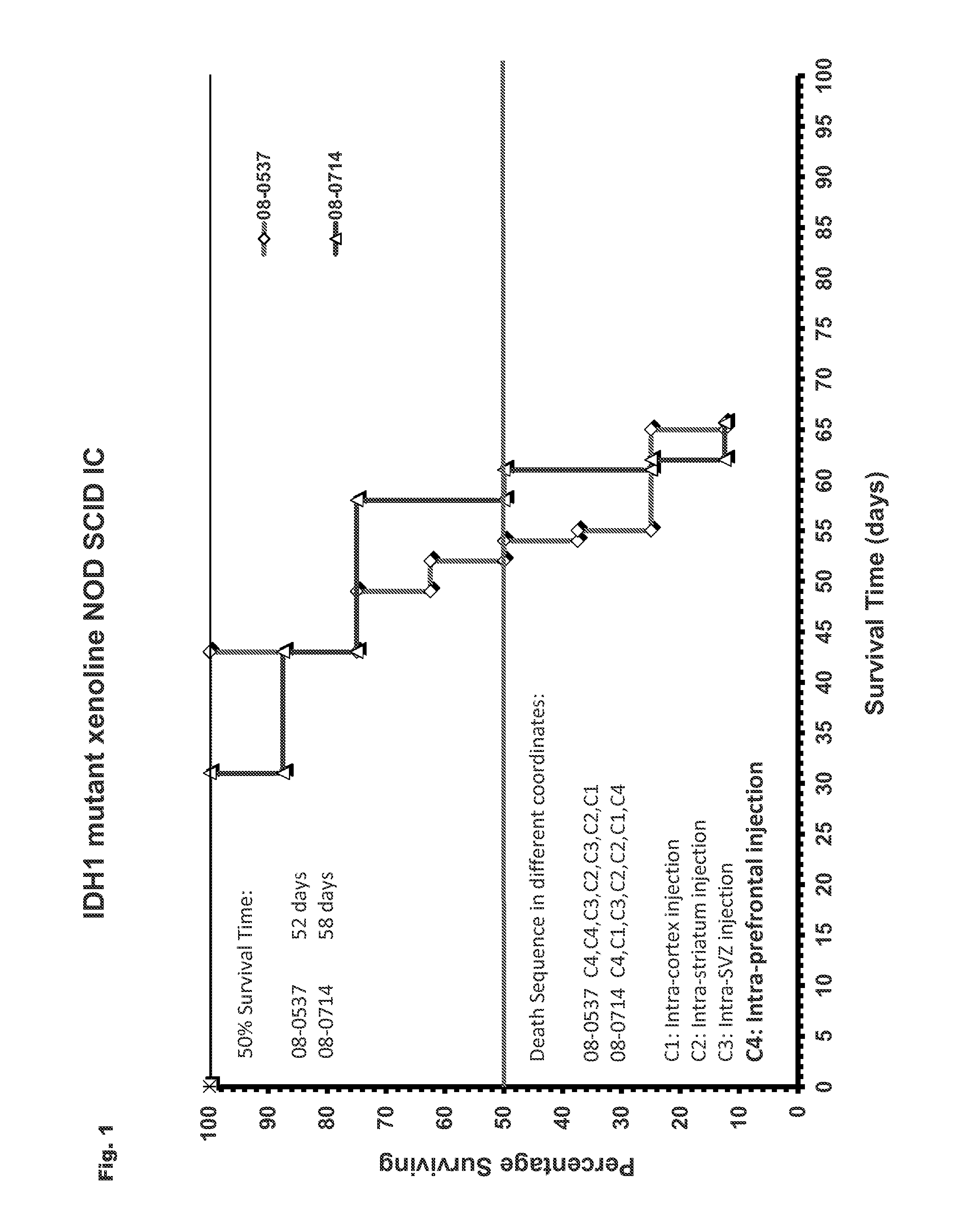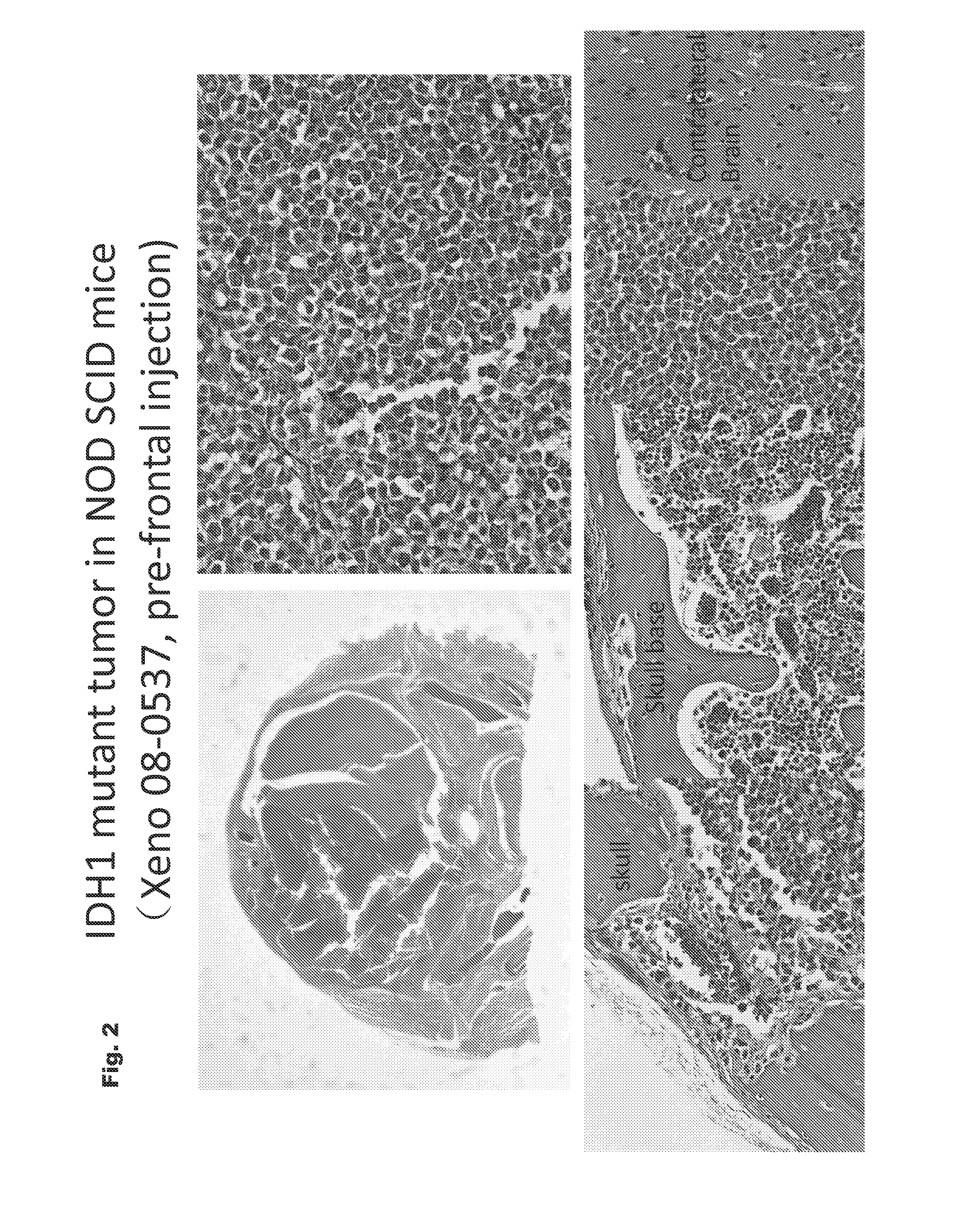IDH1-Mutated Human Glioblastoma Cell Lines and Xenografts
a human glioblastoma and idh1 technology, applied in the field of idh1mutated human glioblastoma cell lines and xenografts, can solve the problems of no glioblastoma cell line or xenograft model which recapitulates, and the functional effects and significance of idh mutations in human cancer have not been defined, so as to increase normal morphology and reduce cancerous morphology
- Summary
- Abstract
- Description
- Claims
- Application Information
AI Technical Summary
Benefits of technology
Problems solved by technology
Method used
Image
Examples
example 1
Generation of IDH1R132H Homozygous Human GBM Xenografts and Cell Lines
[0038]TB08-0174 (IDH1R132H homozygous) human GBM xenograft and cell lines were derived from a 31 year old female patient with a secondary human GBM. Subcutaneous tumor xenografts were generated from the tumor tissues. It has become a well-established line with over 24 passages. Genomic DNA from passage #9 xenograft has been sequenced for common glioma gene mutations. The xenograft tumor contains homozygous IDH1R132H mutation, PTEN c.333G>A, p.Q97L mutation, ERBB2 c.2444G>AG, p.G815E mutation. No mutation was identified in TP53, RB1 or PIK3R1 (X7-14). IDH1R132 mutation was also found in the primary tumor biopsy. But PTEN or ERBB2 mutations were not revealed in the tumor biopsy. The human tumor cells have been purified from the xenografts and grown in vitro.
example 2
Generation of IDH1R132H Heterozygous Human GBM Xenografts and Cell Lines
[0039]TB08-0537 (IDH1R132H heterozygous) human GBM xenograft and cell lines were derived from a 37 year old female patient with secondary human GBM. Subcutaneous tumor xenografts were generated from the tumor tissues. It has become a well-established line with over 23 passages. Genomic DNA from passage #5 xenograft has been sequenced for common glioma gene mutations. The xenograft tumor contains a heterozygous IDH1R132H mutation, PTEN c.290A>T, p.Q97L mutation, and c.818G>A, p.R273H TP53 mutation. No mutation was identified in PIK3R1 (x7-14), ERBB2 or RB1. The IDH1R132, PTEN and TP53 mutations were also found in the primary tumor biopsy. The human tumor cells have been purified from the xenografts and grown in vitro.
PUM
| Property | Measurement | Unit |
|---|---|---|
| Content | aaaaa | aaaaa |
| Morphology | aaaaa | aaaaa |
| Cell viability | aaaaa | aaaaa |
Abstract
Description
Claims
Application Information
 Login to View More
Login to View More - R&D
- Intellectual Property
- Life Sciences
- Materials
- Tech Scout
- Unparalleled Data Quality
- Higher Quality Content
- 60% Fewer Hallucinations
Browse by: Latest US Patents, China's latest patents, Technical Efficacy Thesaurus, Application Domain, Technology Topic, Popular Technical Reports.
© 2025 PatSnap. All rights reserved.Legal|Privacy policy|Modern Slavery Act Transparency Statement|Sitemap|About US| Contact US: help@patsnap.com



